Services
Utility Excavation
Utility excavation has been the cornerstone of Gable’s Excavating business as a utility contractor from the very beginning. Over the years, we have added other services to round out our resume, but excavation was the singular focus in the beginning. Utility excavation is a process of digging – whether by hand or with various types of heavy equipment – to place utilities below ground. Underground utilities include water, sewer, storm-sewer, geothermal, gas and other forms of utilities that simply are not feasible to be placed overhead due to safety, weight or size variables. For this type of service, we most commonly find ourselves working as a subcontractor for several trades including but not limited to: electrical contractors, plumbing contractors, geo-mechanical contractors, rural water providers, fiber optic/telephone/telecommunications providers and utility providers such as electric, gas, cable, etc…, although we also regularly work for home-owners and end-users seeking to save money by using their own contractor instead of a “recommended” utility contractor.
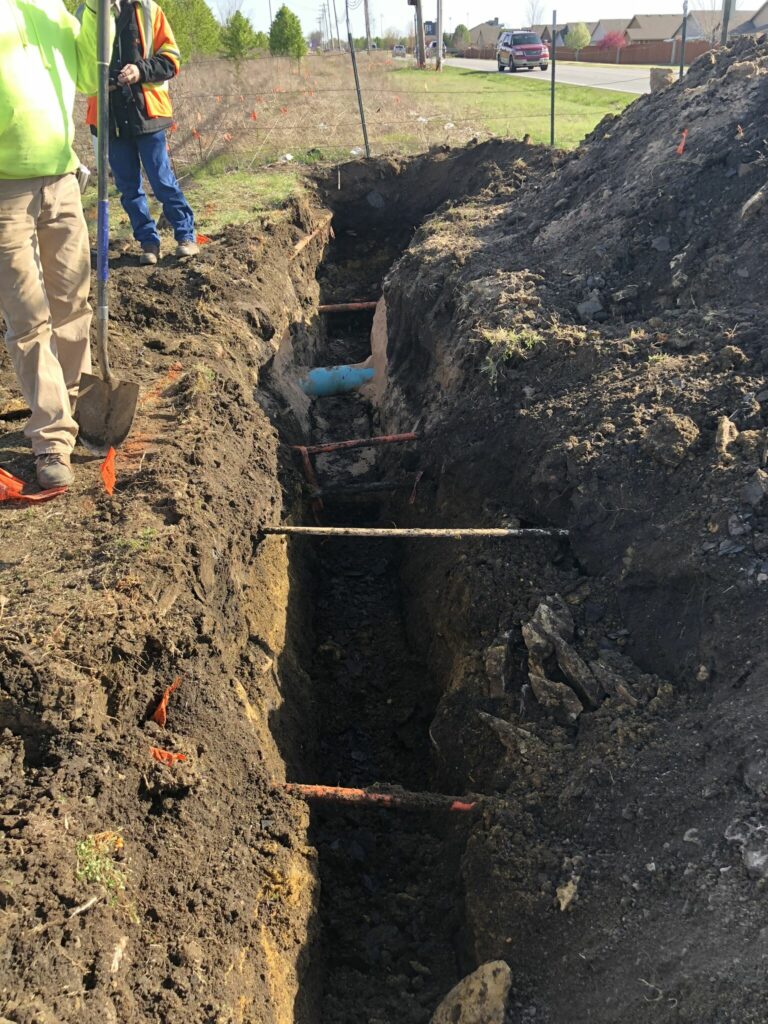 Utilities are most commonly placed underground for added protection from the weather and other outside factors that could cause a loss of service to the end user. Other reasons for utilities to be installed below ground may be: the lack of overhead electrical infrastructure, protection from vehicular or other man-caused damages, or simply out of necessity due to aerial construction being out of the question for one reason or another, while other utilities are placed underground due to an infeasibility to be placed overhead.
Utilities are most commonly placed underground for added protection from the weather and other outside factors that could cause a loss of service to the end user. Other reasons for utilities to be installed below ground may be: the lack of overhead electrical infrastructure, protection from vehicular or other man-caused damages, or simply out of necessity due to aerial construction being out of the question for one reason or another, while other utilities are placed underground due to an infeasibility to be placed overhead.
Our longest term and largest customer based strictly on gross sales is PSO – Public Service Company of Oklahoma. We have worked with PSO for over thirty years on projects ranging from simple electrical service replacements to complete neighborhood overhead to underground conversion projects. GEI also has a long history of serving some of the telecommunications industry giants such as: Verizon, Century Link, Level (3), Sprint, and AT&T just to name a few. Our company has successfully completed projects ranging from customer service drops to 50+ mile, million dollar-plus long-distance fiber optic backbone projects.
Our company sets itself apart from the competition by our attention to detail and our focus on quality and customer satisfaction. Chances are, if a client hires both GEI and a competitor for underground utility construction, we will both use the same or similar types of equipment and we will both place the utility to be installed below ground. The difference, as with everything, is in the details. GEI prides itself on customer satisfaction and following through on our promise to each and every customer. Our commitment to re-invest in our business is evident in our late-model, top of the line, dependable vehicles, equipment and tools that ensure that we will be onsite and ready to work, as promised. Our follow through will be apparent from the first customer interaction to the post-work follow-up and every step in between. Our attention to detail will show through in every aspect of GEI’s workmanship and be especially apparent by the way in which we leave the jobsite. The difference isn’t necessarily in what we do, it’s how we do it – The Gable Way.
Aerial Utility Construction
GEI got its start in aerial utility construction in the early 1990’s working for the Public Service Company of Oklahoma or PSO. Back in those days, Gable’s aerial work primarily consisted of building electrical facilities for PSO and was mostly ancillary work that came along with underground electrical excavation. This work continued for several years but was never a substantial portion of Gable’s business. During the dot-com boom of the 90’s, Gable’s Excavating also worked for telecommunications providers helping to build fiber optic networks for several major carriers. Gable’s provided some aerial construction services to these customers but again, mostly as a byproduct of underground construction. It wasn’t until another Tulsa based company, a business telecommunications provider startup known as EasyTel reached out to Gable’s Excavating in the mid 90’s that aerial construction became a focal service in Gable’s repertoire.
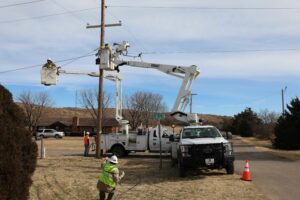
GEI’s number one priority is safety and that commitment is front and center in our aerial construction division. GEI offers customers in this market a unique value – results based on production without sacrificing safety and quality. We bring the same safety standards adopted from working with high voltage electric and nationwide corporations to the telecommunications industry. You will always recognize a GEI crew by their bright yellow, hi-visibility, fire-resistant uniforms, white hard hats and safety glasses. While most of the competition doesn’t even bother wearing fall protection harnesses while working in the air, GEI goes above and beyond expectations. This is especially critical for larger, more mature clients who must hold their contractors and subcontractors to the highest expectations of safety and companies of all ages and sizes that value safety on their projects over the all mighty dollar. A huge contributor to GEI’s success on both the safety and production front is its dedication to reinvesting profits into the company. This investment results in late model, dependable bucket trucks, trucks, equipment and support equipment that are always kept up to date on safety inspections, free from defects, clean, and ready to produce results in the safest, most efficient manner possible.
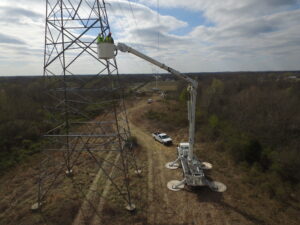
Each and every project is approached individually and with the same level of detail. GEI is regularly involved in projects as a consulting company to assist providers with input based on years of knowledge and familiarity with the Tulsa market before construction has even begun. Once a project is started, GEI’s team moves from planning to construction seamlessly, beginning work in a timely manner and staying ahead of the curve by anticipating and addressing potential time killing factors before they occur. GEI’s project managers work hand in hand with customers throughout construction and provide progress reports in a clear, timely and transparent manner. Our commitment to customer satisfaction does not change when the work is complete. GEI follows up each and every project up with timely final reports and as-builts, post construction inspection, customer satisfaction survey and prompt invoicing and close-out. It is our goal at GEI to add value to our company by adding value to our customers and employees. Give us a call today to see what GEI can do for you or your company!
Horizontal Directional Drilling
Horizontal Directional Drilling is one of if not the most significant advancements in our industry in quite a long time. Horizontal directional drilling, also known as boring or road boring is the process of installing a utility beneath the surface in between two points without disturbing the soil at ground level. While this may “on the surface” seem like a very big deal, the advantages of this form of utility construction are massive.
GEI has been involved in the horizontal directional drilling market nearly since the inception of the technique. GEI purchased its first horizontal directional drill around 1990 and has been perfecting the practice and techniques used to complete a successful bore ever since. From the first HDD machine that we owned, up the current, most advanced equipment and electronics available, Gable’s Excavating has always been on the cutting edge of innovation in this field.
There are a lot of HDD contractors that have come and gone over the years, but GEI has survived the test of time and proven its 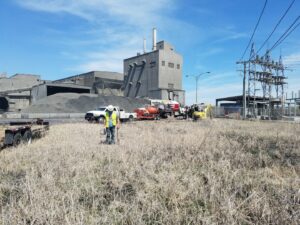
There are three main factors that contribute to our extremely high success rate in this field. The first of these factors has been and always will be our employees. GEI has always taken pride in the level of skill and experience we require in our foremen and equipment operators but this goes above and beyond for our HDD personnel. Due to the unknown factors that play into each and every bore GEI begins, our personnel must be extremely knowledgeable and have the utmost respect for safety. GEI’s equipment is the second factor in our success in HDD. GEI’s commitment to investing back into the company have resulted in the latest and greatest horizontal directional drills, the newest and most advanced locating technology, the most effective tooling specific for ever changing ground conditions and the correct drilling fluids to ensure highest probability of success. Lastly, and perhaps the most important, is the education. While extremely expensive, money alone can buy the most experienced employees, the newest and most costly equipment, the most sophisticated locating system, etc… While these things might seem like a guarantee for success, the education is the most expensive and most crucial part of the equation. GEI has earned that education over its 30 year history of providing HDD services. We have completed thousands of bores in Tulsa, throughout Oklahoma, and extending into the surround states of Texas, Louisiana, Missouri, Arkansas, and Kansas. We’ve learned a lot from our success. We have learned more from our mis-steps, as is typically the case, and have evolved our processes to avoid those mistakes in the future. This is where our company sets itself apart from others who provide similar services. There are few circumstances we have not previously faced and rarely a complication without a solution based on past experience.
If you or your company are looking for a horizontal directional drilling utility contractor that has the experience, expertise and equipment to handle projects of all shapes and sizes. Or, maybe you are looking for a more dependable, more competitive, more safety conscious, or more capable partner than your current subcontractor. Please give GEI a call today to schedule a no-obligation consultation with a HDD project manager to discuss what we can do for you. As always, all quotes are prepared for free within 1 business day and we guarantee to beat any competitors price by 15%!
Hydro Excavation
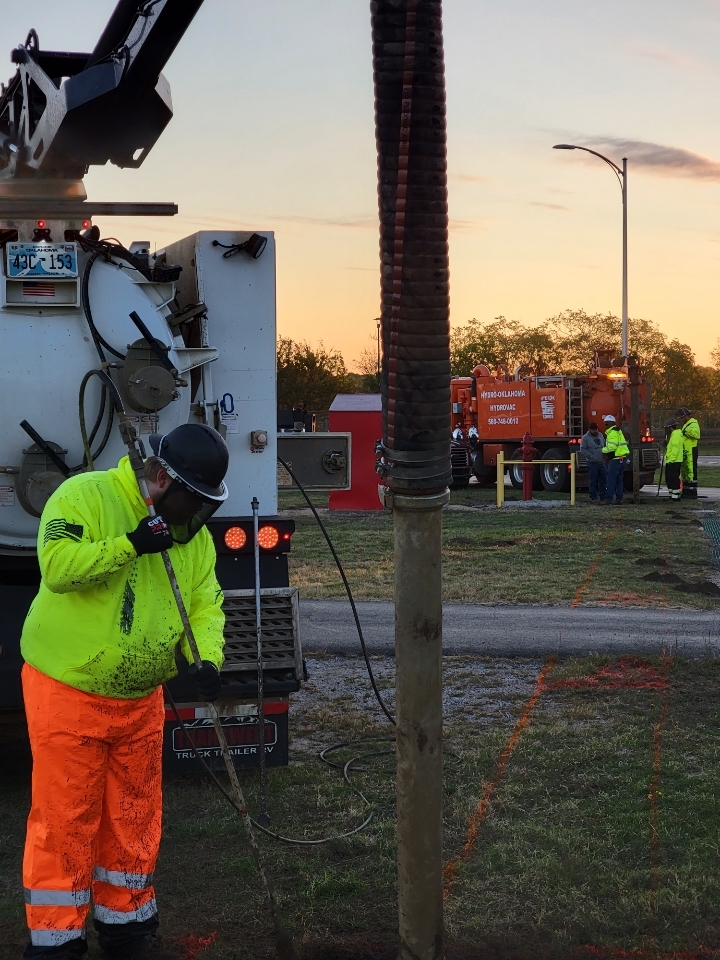
What is Hydro-Excavation?
Hydro-excavation is a non-destructive method of digging that utilizes a high-pressure water jet to break up soil and a powerful vacuum system to remove the resulting slurry. This combination of water and vacuum power allows for precise excavation without the risk of damaging underground utilities like gas lines, water pipes, or electrical cables.
Benefits of Hydro-Excavation
- Minimizing Utility Damages: The primary benefit of hydro-excavation is its exceptional ability to minimize utility damages. Traditional excavation methods, such as mechanical digging or backhoes, carry a significant risk of hitting and damaging existing utilities. With hydro-excavation, the high-pressure water jet breaks up the soil gently, allowing for safe and precise excavation around utilities without causing harm.
- Enhanced Safety: Hydro-excavation prioritizes safety above all else. By avoiding accidental utility strikes, the risk of gas leaks, electrical accidents, or waterline ruptures is significantly reduced. This minimizes the potential for injuries and costly repairs, making it the safest option for excavation.
- Cost Savings: While some might assume that cutting-edge technology comes at a premium, hydro-excavation can lead to substantial cost savings. By preventing utility damages, you avoid expensive repair bills and potential legal liabilities. Additionally, the reduced risk of accidents and injuries translates into lower insurance costs and a safer workplace.
- Environmental Friendliness: Hydro-excavation is an eco-friendly excavation method. The use of water as the primary digging agent eliminates the need for harmful chemicals or fuels, reducing the environmental impact. The vacuum system also collects and contains the slurry, preventing soil and debris from contaminating the surrounding area.
- Precision and Efficiency: Hydro-excavation offers unparalleled precision. Operators can precisely control the water pressure and vacuum power, allowing for accurate excavation in confined spaces or areas with multiple utilities. This precision leads to more efficient work, reducing project timelines and associated costs.
Applications of Hydro-Excavation
Hydro-excavation is a versatile technique with a wide range of applications:
- Utility Location and Repair: When utilities need maintenance or repair, hydro-excavation is the preferred method for exposing the affected area without causing additional damage.
- Trenching and Potholing: Hydro-excavation is ideal for creating trenches or potholes to install new utilities or assess existing ones, all while minimizing the risk of damage.
- Daylighting: Hydro-excavation is used to uncover utilities during the planning and design phase of construction projects, ensuring accurate and safe placement of new structures.
- Slot Trenching: This technique is commonly used for pipeline and cable installation, providing a precise and non-destructive way to create narrow trenches.
In the world of excavation, hydro-excavation stands out as a revolutionary technique that prioritizes safety, precision, and environmental responsibility. With its ability to minimize utility damages and reduce associated costs, it has become the go-to method for excavation projects of all sizes. By harnessing the power of hydro-excavation, you can dig deeper while keeping your surroundings safer than ever before. Say goodbye to utility damages, and embrace the future of excavation with hydro-excavation.
